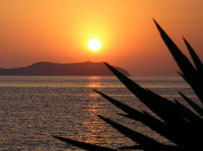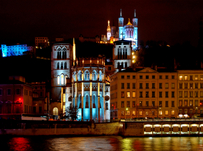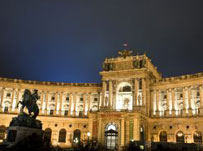Top 5 winter getaways in Europe
There may be a specific language that you’d like to practise, or learn, in which case which country you choose to go to will be straightforward.
If your travel plans are purely leisure-based though, where you choose will depend on whether you’re looking for sun or snow, and (if you’re planning a trip in November or December) whether you want some festive cheer, or to avoid the chaos of Christmas!
Whatever the case, here are some recommendations for some great winter travel destinations this year.
1. Heidelberg, Germany
For anyone who embraces all things Christmas, and who pines for those festive childhood Decembers, Heidelberg is a fantastic place to go to during November and December. With its fairytale castle, beautiful setting and pretty old town, there’s no better place to take in some Christmas markets and soak up a bit of festive cheer…and gluhwein! If you’re lucky you might even get some snowfall – not unusual for this part of Germany in the run up to Christmas.
Cactus offers a range of German courses in Heidelberg, with several options for accommodation.
2. Tenerife, Canary Islands 
Anyone who hates the cold and whose sole requirement from a winter trip is that it takes them somewhere hot will find that Tenerife is a great option. With average temperatures in November and December of around 15 degrees centigrade, and plenty of sunshine to enjoy, it’ll provide a very welcome respite from the grey days and frosty mornings. Tenerife is really well served by low-cost airlines, and budget accommodation is easy to find too, which means that it’s also a good destination for anyone who needs to travel on a shoestring.
Although Christmas is obviously celebrated in Tenerife, the different climate and environment will clearly remove you from the usual Christmas clichés that you are bombarded with in mainland Europe, which may be a welcome break for many!
Cactus offers Spanish courses in the town on Puerto de la Cruz in a school just 2 minutes walk from the beach.
3. Turin, Italy 
Turin hosted the Winter Olympics in 2006, which gives some indication of its first-class sporting and entertainment options at this time of year. Obviously, it’s a great destination for ski and snowboard enthusiasts, but it offers a really festive atmosphere in general. The lively Turin Christmas Market is held every year in the piazzas and gardens of Borgo Dora, within the Maglio and Ciliegi courtyards. Market stalls open every day, with music, theatre and activities for children too.
Currently, students can choose between General, Individual and Combined Italian courses in Turin. Also on offer is a specialist Italian and Tango dancing course.
4. Lyon, France 
As France’s gastronomic capital, Lyon is a great place to visit at any time of year. If you visit around 8th December though, you’ll experience the awesome Fête des Lumières (festival of light), when every household places candles along the outsides of all the windows and Lyon’s finest buildings are illuminated with fantastic lights, shows and music. Lyon is also tantalisingly close to the slopes of the French Alps, which makes spending a few days skiing easy to incorporate into your trip.
Currently, General, Individual and Intensive French courses are available at a range of levels in Lyon.
5. Vienna, Austria 
When it comes to crisp winter mornings and cosy cafes where you can shelter from the cold, Vienna is hard to beat. Largely because of what you’ll find in those cosy cafes! Vienna’s reputation as coffee and cake capital is richly deserved, and you’re eyes will most certainly be bigger than your belly when you select your slabs of gateau from the cabinet. If you can ever coax yourself out of the warm cake-havens though, you’ll be in for even more treats – Vienna’s architecture and history is amazing at the best of times, but when Christmas decorations are all around and you have ice rinks and Christmas markets to enjoy, Vienna will rapidly become your new favourite place.
German courses available in Vienna include General, Individual, Combined and Intensive courses. Also offered are Academic Year courses, Teacher Refresher courses, Juniors courses and German and Music courses.

